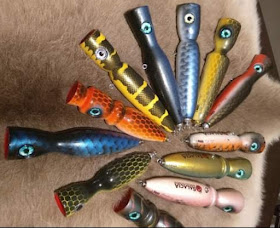
No surprise; they did what the winners of any competition do: took their trophies home and showed them to their wife or mother. And the women on Borneo did just as proud wives and mothers of Olympic gold medalists do—or those of a member of the team that won the FIFA World Cup. As an eyewitness report in The Pagan Tribes of Borneo (1912) explains in the chapter titled “War”:
“In the course of the feasting the women usually take temporary possession of the heads, and perform with them a wild, uncouth dance, waving the heads to and fro, and chanting in imitation of the men’s war-song.”
The “wild, uncouth dancing” and “chanting in imitation of the men’s war-song” may have milder, modern interpretations, but sports champions these days have not been in a life-or-death competition. Also, modern champions and their women do not have a cultural tradition for celebrating victory, as the Iban did.
The Iban women wove a ceremonial, multicolored textile called “pua kumba” that was used for lifecycle events, also for “receipt of an important item to a longhouse”, as one website discreetly explains. The Iban warriors did not fly home and straight into their loved one’s arms with their trophies. For a few days, they camped within earshot and the trophies would be smoked and dried, the hair combed. When they then did return home, it was important that the pua kumba was properly place on the tray held by the woman to receive the trophy (or trophies) so that it/they touched the most potent motif of the pattern.
Iban women are still weaving pua kumba, a warp ikat textile, but it is assumed that they are no longer used to receive captured heads.
Welcome to Paradise!!
Thursday, October 14, 2010
What did the Iban headhunters on Borneo do with their trophies?
Sunday, October 10, 2010
Rafflesia

The largest flower in the world,reaching a diameter of about three feet,Rafflesia is found in forests in the Malaysian states of Sabah and Sarawak. Seven out of fifteen species worldwide of Rafflesia can be found in Malaysia.
Because the Rafflesia flower is located in specific areas, and little is know about its methods for pollination and seed dispersal, it is difficult to find conservation methods. Residents in Malaysia are encouraged to save the flowers on their private property, and are encouraged to charge small entrance fees to see the flower. This little income goes a long way in conserving the flowers. In peninsular Malaysia, flower buds are sold as traditional medicines. These buds are seen as a sign of fertility, and are given to help mothers recover after birth. The over collection of these buds has not helped with conservation efforts, and has drastically reduced the number of Rafflesia in the wild.
All of these factors lead to decreasing numbers of Rafflesia. Many species of Rafflesia are vulnerable to deforestation and development, and as populations grow, Rafflesia becomes more threatened.
In Sarawak,Rafflesia can be found in Gunung Gading in Lundu,not far from Kuching,the capital city of Sarawak.
In Sabah, the flower and host vine Tetrastigma are protected under the state's Wildlife Conservation Enactment of 1997. In 2002, 44 of 83 Rafflesia found in the area were outside of designated conservation places. The beginning stages of conservation call for finding, monitoring and protecting the flowers that appear. Conservationists are hoping that complete habitat protection will come, but there is no sign of complete habitat protection in the near future.



